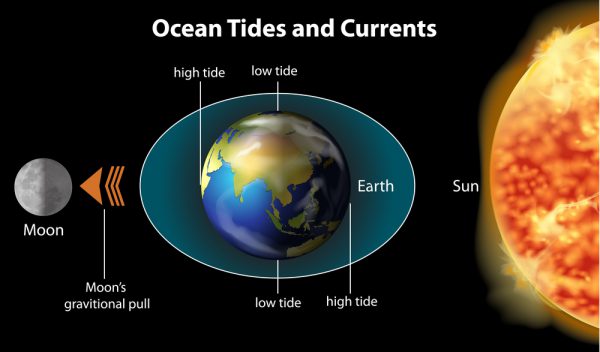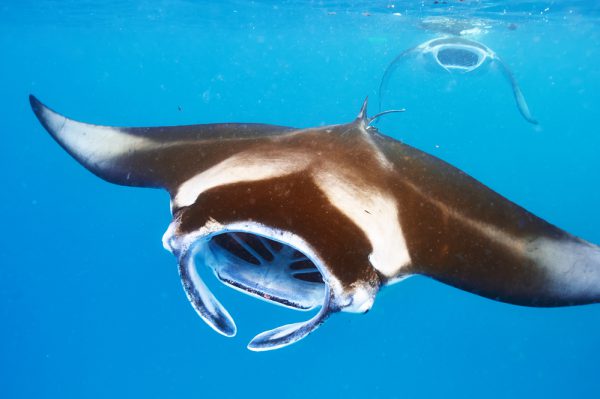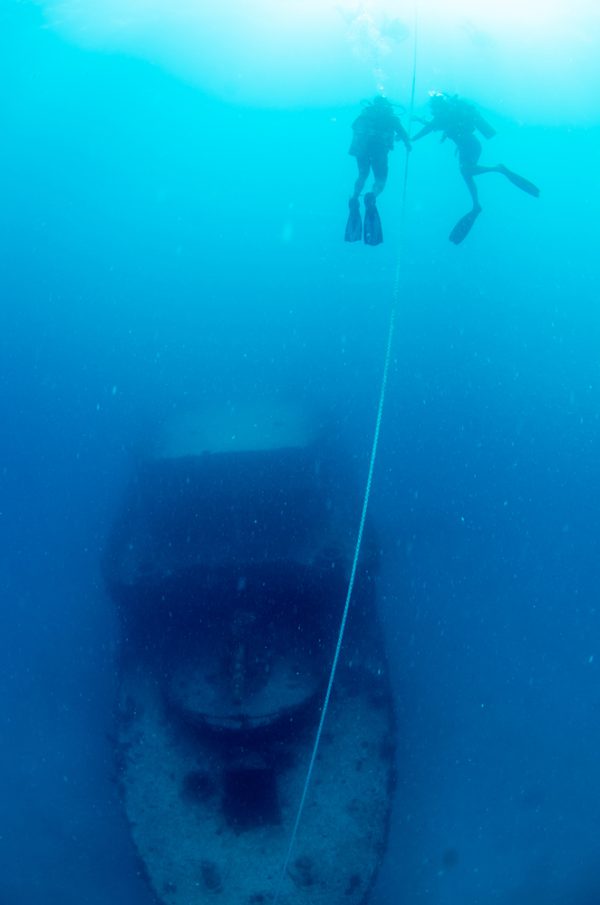Hey there! I have some great tips for you on how to drift dive and a great video to watch. Drift diving means diving with the current, exactly as the name implies. If you’re a new or novice diver or trying this for the first time, it might sound scary and make you feel nervous.
For many divers, this is one of the most exhilarating types of diving because you just ‘go with the flow. It’s one of the easiest and most enjoyable ways of diving once you learn the techniques and understand the basics of how currents and tides work.
Please watch this video first so you have an idea of what it’s like to drift dive and then we’ll talk a bit about currents and how they work.
What Causes Ocean Currents? – You need to know this for drift diving
Ocean currents are movements in water going from one area to another and are caused by wind, water density differences and tidal currents.
Some dive sites may almost always have a current, while others are driven by wind, rainfall or by tidal forces that control the direction and strength of horizontal water movement.
While visibility in currents varies at sites, large pelagic creatures (i.e. whale sharks) to the tiniest marine life love hanging out delighting in freshly brought in rich nutrients.
In open water, winds can circulate water for miles and miles creating currents at the surface of the ocean or near the surface. Even near the coast, winds can create great havoc resulting in coastal upwelling.
Drift diving requires intricate planning on safety compared to regular diving in relatively still water.
To avoid fast tidal currents, keep an eye on when the moon is almost full or a new moon. This is when the water’s horizontal movement is extremely fast making the current stronger and dangerous for divers being swept away.
The best time to dive is when the current is very mild and this happens twice a month, during the lunar’s first and third quarter.

How drift diving is done?
Drift diving is mostly done from the boat. The boat captain follows the divers’ bubbles staying a distance away while waiting for the tour guide who is underwater with the dive group to release the colourful surface marker buoy to the surface.
Staying together with your group and dive buddy is extremely important because you don’t want to become separated.
Sometimes things don’t go the way you and your dive buddy planned and you are now alone. You lost your buddy and your dive group. This is where your due diligence comes into play. Always carry your own colourful surface marker buoy. Even an underwater/surface whistle and a flashlight are helpful especially when the surface visibility is not at its best.
Why I like drift diving
My first drift diving memories began in Cozumel and I can remember feeling a little nervous and spending some time with my professional tour guide on the procedures.
Many divers think of drift diving as the lazy way of diving. In my opinion, this is quite true. Why? Well, when we feel lazy we don’t want to do anything. It’s the same with drift diving and once you get to the bottom and get into your neutral buoyancy, that’s it, relax and simply drift.
Drift diving is now one of the most exciting types of dives that allow me the most surreal experiences and here’s why…
1) Diving effortlessly means no work, less energy, and less air consumption. It’s a feeling of freedom!
2) The current will take you wherever it wants to go and covers more distances.
3) Larger pelagic sea creatures like the gentle whale shark and the friendly giant manta ray and other smaller hungry marine life can be seen feeding on fresh rich nutrients, the plankton soup, brought in from the current. Even coral is most beautiful and plentiful as they too get to feed on floating plankton at night.

4) Once you start drifting the boat is never too far away from you and you never have to swim into the current so you won’t get tired.
Tips To Get The Best Drift Diving Experiences – Become An Expert
Keep Taking Dive Courses.
While drift diving is usually not part of the entry-level Open Water Diver Certification course, some dive organizations like PADI offer a drift diving course as a specialty. I highly recommend it to anyone who is interested in doing drift diving for the first time.
Please watch this short introduction to PADI’s Drift Diver course.
To get yourself prepped up for PADI’s Drift Diver course, you might want to consider the following:
1) Taking additional dive courses for buoyancy control is an absolute must, even if you aren’t interested in drift diving. The course is called, PADI’s Peak Performance Buoyancy and teaches you how to feel comfortable and improve your buoyancy skills.
The Advanced Open Water Diver Certification is also excellent and can be taken immediately after the entry-level course.
2) You must be properly weighted.
3) Keep doing more dives. This will improve your confidence which will decrease the number of weights you wear.
4) Develop a safety plan with your dive buddy, and stay close together to prevent separation. Agree on when to abort the dive.
5) Maintain and inspect your dive gear. Do pre-dive buddy inspection.
6) Safety dive gear. Always have your submersible marker buoy and whistle attached to your BCD.
While You Drift Dive, Go With The Flow.
Don’t fight the current…
1) Once, you’re down near the bottom, remember, don’t fight the current. Cut back on your fin kicking because if you swim with the current you’re going to miss everything and be too ahead of your dive group.
2) Maintain good buoyancy control and be streamlined. This is the key to having fun as well for safety reasons. Ensure nothing is left dangling that can get you entangled or hurt coral as you drift.
3) Observe the local fish inhabitants in their topography because they already know exactly where to hang out if the current is too strong for them.
4) Stay close to the bottom.
5) Always moving from the time you descend to the time you ascend, you are constantly moving so be aware of what’s ahead of you to avoid obstructions.
6) If you have challenges equalizing your ears, let your buddy know and your buddy remains with you. While equalizing, always keep an eye on the location of your dive group and surface marker buoy (if used) as this is your entrance location.
7) Observe the current, you can slow your descent if you find the current manageable allowing you to better clear your ears while you and your buddy catch up to the others.
If you still can’t clear your ears or are unable to catch up to the group, abort the dive and you and your buddy return to the boat. If you must do this, make sure to inflate your safety sausage so the boat crew can locate you. Use your whistle to grab their attention and wait for the boat to pick you up.
8) Always monitor your air and depth gauge. It’s easy to think you have plenty of air because you’re floating effortlessly but it’s easy to be swept deeper than what you should be and therefore end up doing decompression safety stops.
Remember to compensate for ample air in the event of an emergency.
Listen to Your Pre-Dive Meeting Before You Begin Your Drift Dive
One of the things I enjoy is listening to the tour guide because it helps me prepare for my dive and to know ahead of time what I should be expecting and what to look for. This is the time for you to prepare…
1) If you feel you’re not ready to drift dive this is the time to bail out. If your Tour Guide warns you of the current, make sure to ask questions… ‘How strong is the current?’.
Listen to your gut feeling and decide if you need to discuss any stresses with your buddy or tour guide. It’s absolutely ok to not proceed with the dive and your buddy can always partner with another diver.
2) Dive within your limits.
Photographers Face The Current During Your Drift Dive
Trying to stay stationary to take photos will be a challenge and you’ll find you need to do some finning which of course, causes you to consume more air. If you’re lucky, you might find some outcropping as shelter or use a reef hook depending on how the dive is conducted.
The best way to take photos is to face the current because finning is easier, and you don’t risk losing your mask so you can see objects ahead.
Don’t forget to secure your camera with a strong lanyard and keep it from dangling!
Make Pitstops At Artificial Reefs During Your Drift Dive

So you want to see a famous wreck … how will you do this with current and not drift past the wreck?
Depending on where you drift dive, different techniques may be used by your tour guide.
One of the best ways to dive a wreck is to use a tagline set up at the boat’s stern weighted to the mooring line that goes all the way down to the wreck. This gives you confidence and time to take photos and investigate.
Another way is to have the tagline along the surface. My preference is the weighted tagline.
The most important advice is to never let go of the line, going hand over hand and watching carefully for barnacles. You may want to wear dive gloves.
When you get to the wreck, you can use it as shelter from any strong current by getting to the leeward side of the current. This makes it easier to hang out at the wreck.
What’s next?
Drift diving is easy and lots of fun! There is no other way of getting the awesome flying experiences and seeing pelagic activity but the most important step is to do it safely and know your limitations.
If you want to be a confident drift diver BUT you feel your buoyancy is not controlled, there are 2 steps I recommend you take.
Click here to learn more about PADI’s Peak Performance course and their Advanced Open Water Diver Certification.
If you want to learn more about aquatic currents, learn how to stay together as a group and with your dive buddy, and get real live drift diving experiences then click here for PADI’s Drift Diver Course.
I hope all this information on drift diving has been helpful to you.
Do you have any stories you would like to share on your drift diving experiences or have comments or questions, I really would like to hear from you. Please put them in the Comment Box below.
Thanks for reading!
Monica

Wow what an exciting sport to say the least. I scuba dive and as far as drift diving goes, your right it does make me somewhat nervous. And the video was absolutely amazing. So much to see and learn about. I can understand why drift diving may give you the feeling of freedom. I’m hoping to do another dive trip soon.. I’ll see if there is any drift diving. I’ll be back..This article is very well written and is a very valuable post for anyone one wanting to learn how to drift dive.Thanks for a great article.
Hi Mike,
Thank you for your great comment. I was nervous on my first drift dive … I understand the feeling for sure. Once you do it, you’re really hooked. The feeling of ‘flying’ is amazing. I hope you will give it a try.. just follow the tips and if your buoyancy control is not there yet.. look at PADI’s Peak Performance Buoyancy course. It will really help you even if you don’t do any drift diving.
Regards,
Monica
I am not a scuba diver, but I have always wanted to learn. I am a bit of an adrenaline junkie though, so this must be an incredible feeling. You just drift while something else takes a hold of you. You give in to the will of nature.
I do have a question though. Why do you recommend staying close to the bottom? Is the current not as strong there? I am no expert on the ocean, so I would like to hear your answer.
Thank you for sharing and I hope you make today a great day!
Hi Alex,
Thanks for the great comment and question. Yes… the feeling is like ‘flying’ and freedom letting the current take you.
The water movement is not as strong and is slower when you stay closer to the bottom or reef.
Regards,
Monica